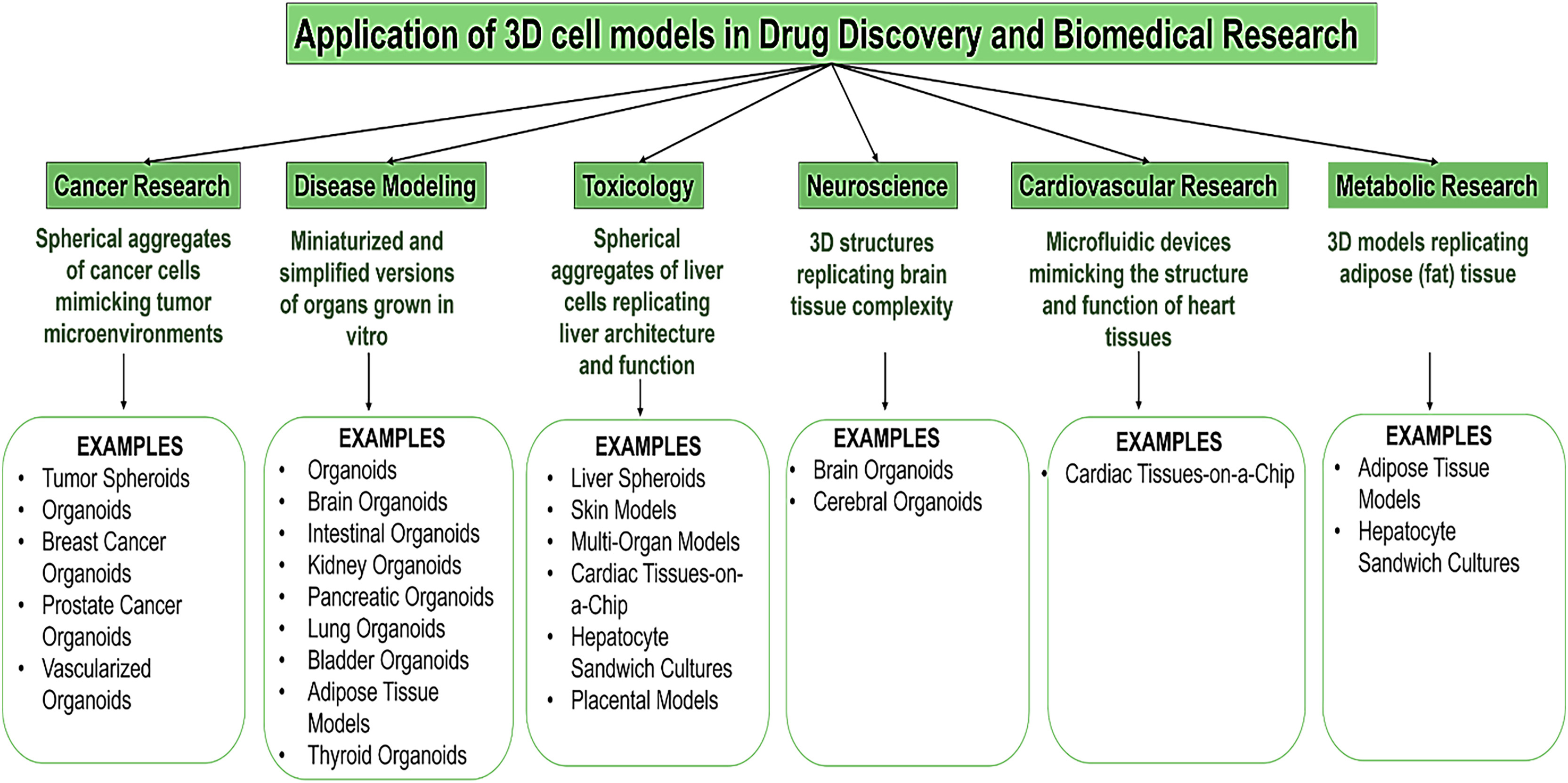Leveraging 3D Cell Culture and AI for Next-Generation Drug Discovery
The transition from two-dimensional (2D) to three-dimensional (3D) cell models is a key advancement in biomedical research. 3D cell models such as spheroids, organoids, and organ-on-a-chip systems provide a more physiologically relevant environment, thereby improving the accuracy of drug efficacy, toxicity, and disease mechanism prediction.
 Fig. 1. Figure illustrating 2D and 3D cell cultures in biomedical research (Dave, Raj, et al. 2025).
Fig. 1. Figure illustrating 2D and 3D cell cultures in biomedical research (Dave, Raj, et al. 2025).
Key technological breakthroughs include 3D bioprinting, microfluidic systems, advanced imaging, artificial intelligence (AI)-driven analysis, and the integration of synthetic biology, which have improved the scalability and accuracy of 3D cell models. These innovations have promoted the development of personalized medicine, regenerative therapies, and efficient drug screening. 3D cell models are expected to revolutionize healthcare through patient-specific drug testing, reduced reliance on animals, and accelerated development of targeted therapies, ultimately changing clinical practice and improving patient outcomes.
3D cell models have revolutionized the entire field of drug development and medical applications by providing greater physiological relevance than traditional 2D cell culture, offering numerous advantages in the research process. Such models include organ-on-a-chip, spheroids, and organoids, which replicate the structure and microenvironment of human tissues, resulting in more accurate and predictive data related to disease modeling, testing, and treatment response. With the ability to construct precise cellular microenvironments and perform real-time cellular response measurements, organ-on-a-chip technology will become a powerful tool for studying organ-level functions and interactions. On the other hand, spheroids and organoids provide important new insights into cell-cell and cell-matrix interactions, enabling the study of tissue formation, cancer biology, and regenerative medicine. These models have shown the potential to bridge the gap between in vitro and in vivo findings, thereby enhancing the translational relevance of preclinical research.
 Fig. 2. Applications of 3D cell models in drug discovery and biomedical research (Dave, Raj,
et al. 2025).
Fig. 2. Applications of 3D cell models in drug discovery and biomedical research (Dave, Raj,
et al. 2025).
Despite these remarkable advances, standardization and reproducibility of these models, or their incorporation into high-throughput screening systems, remain extremely difficult. Efforts to apply these techniques are also inherently resource-intensive and complex, and therefore often preclude widespread use. However, through advances in biomaterials, microfabrication techniques, and computational modeling, these limitations can be addressed, thereby enhancing the utility of 3D cell models in biomedical research.
 Fig. 3. Role and benefits of AI in 3D cell culturing (Dave, Raj, et al. 2025).
Fig. 3. Role and benefits of AI in 3D cell culturing (Dave, Raj, et al. 2025).
The transition from 2D to 3D cell culture represents a paradigm shift in biomedical research. By providing more accurate physiological models, 3D cell culture has enhanced our understanding of disease mechanisms and drug interactions. Although challenges remain, continued innovations in artificial intelligence, bioengineering, and microfluidics are expected to drive future developments in 3D cell models, ensuring their widespread acceptance in research and clinical applications.
Reference
- Dave, Raj, et al. "Leveraging 3D cell culture and AI technologies for next-generation drug discovery." Cell Biomaterials (2025).

Your email address will not be published. Required fields are marked *